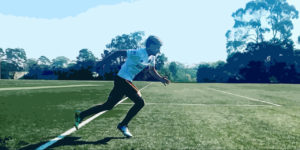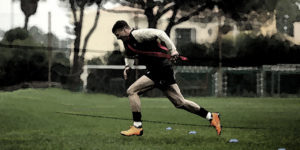Training for and playing sport has a mostly positive impact on your health. Cardio is good for your heart, lungs, and circulatory system, while strength training is good for your muscles, bones, and joints. Sport also has a very positive effect on mental health, improving things like self-image, confidence, and social health.
There are, of course, some risks to playing sport, especially if that sport is rugby. Pushing your body to its limit can take its toll, and most ruggers experience at least a handful of injuries during their playing careers. Some of those injuries may be serious.
From athlete’s foot to cauliflower ear, there are definite downsides to rugby, but most players are more than happy to ignore them.
Nonalcoholic fatty liver disease
A study by several authors, including the Division of Physical and Health Education, Setsunan University, Neyagawa, Japan, published in 2018 established a link between rugby forwards and nonalcoholic fatty liver disease. In the study, forwards were three-times more likely to suffer from NAFLD than backs. That is a very significant increase in risk.
Your liver is a vital organ that is responsible for a wide range of functions, not least detoxification, metabolizing medications, secretion of bile for the emulsification of dietary fats, and filtering blood. Unlike your kidneys and lungs, you only have one liver which means it’s an especially important organ. Liver problems are often serious. Nonalcoholic fatty liver disease, NAFLD for short, is a range of medical conditions caused by the build-up of fat in the liver.
A healthy liver should contain little or no fat, but an increased level of liver fat is associated with a range of serious health complications including diabetes, high blood pressure, and kidney disease. NAFLD also increases your risk of heart problems, especially if you also have type 2 diabetes. Untreated NAFLD can lead to cirrhosis. Cirrhosis is scarring of the liver caused by long-term liver damage. The scar tissue prevents the liver from working properly.
Cirrhosis can eventually lead to liver failure, and that can be fatal.
There are four stages of NAFLD.
- Simple fatty liver (steatosis) – this stage is characterized by a mostly harmless build-up of fat in the liver cells that may only be diagnosed during medical tests.
- Non-alcoholic steatohepatitis (NASH) – a more serious form of NAFLD, this stage is characterized by liver cell inflammation. It is estimated that around 5% of the population suffers from NASH.
- Fibrosis – this stage is where NAFLD causes the formation of scar tissue around the liver and nearby blood vessels. However, the liver still functions normally.
- Cirrhosis – this stage of NAFLD occurs after years of inflammation. The liver shrinks and becomes scarred and lumpy. The damage is permanent and can lead to liver failure and liver cancer.
NAFLD symptoms
The early stages of NAFLD don’t normally produce any symptoms. You won’t know you have it unless it is diagnosed during liver function tests as part of a routine medical or tests carried out for another reason.
Later stages of NAFLD can cause the following symptoms:
- A dull ache in the top right of the abdomen, over the lower right side of the ribs
- Extreme fatigue
- Unexplained weight loss
- Decrease in performance and weakness
If cirrhosis develops, symptoms such as jaundice (yellowing of the skin and the whites of the eyes), itchy skin, and edema (swelling in the legs, ankles, feet or tummy) are common.
Why are forwards more at risk of developing NAFLD than backs?
While exercise is vital for general health, and that includes the health of your liver, diet and body composition are also important. In rugby, body mass is seen as a very desirable trait, especially for forwards.
Forwards tend to have a higher body fat percentage than backs, and often eat a diet designed to maintain or even increase their body mass. Also, endomorphs are often drawn to playing in the forwards, and as well as being big and strong, endomorphs tend to have a higher than average level of body fat.
In contrast, and despite spending most of their time standing and waiting for the hard-working forwards to feed the ball back to them (!), backs tend to be leaner. This means their risk of suffering from NAFLD is considerably lower.
How to reduce your risk of NAFLD
NAFLD is largely untreatable, other than by liver transplant. However, in its early stages, it is reversible (your liver can regenerate itself) and it’s also avoidable. Because it is asymptomatic i.e. there are no symptoms in the early stages, it makes sense to avoid NAFLD rather than ignore the risks and wait for it to develop.
Interventions that will reduce your risk of NAFLD include:
- Lose weight – if you are overly fat, losing 10% of your body mass will remove fat from your liver
- Eat healthily – yes, food is fuel for rugby, but that doesn’t mean what you eat can’t be good for you too. Eat more vegetables, whole grains, natural fats, lean protein, and fruit, and less processed foods. Forget about “dirty bulking” and try to eat clean.
- Exercise regularly – as a rugger, you should already be doing this but make sure your schedule includes exercise for your health as well as your rugby performance. Try to clock up around 150 minutes of low to moderate intensity cardio per week as well as your rugby-specific training.
- Cut down on alcohol – NAFLD is not caused by alcohol consumption, but drinking can exacerbate many of the problems associated with it. Give your liver a break by not overloading it with alcohol. Drink alcohol in moderation, if at all.
Summary
Exercise offers protection from a wide range of medical conditions, but you can’t out train a bad diet. If you want to be healthy, you need to eat healthy too. Fitness and health are NOT the same things, and if you are significantly overweight, even if you train hard and often, your health may still be at risk. This applies not just to rugby forwards, but any sport that values body mass e.g. strongman, the throwing events in athletics, powerlifting, and wrestling.
Photo Credit: collegian.com


